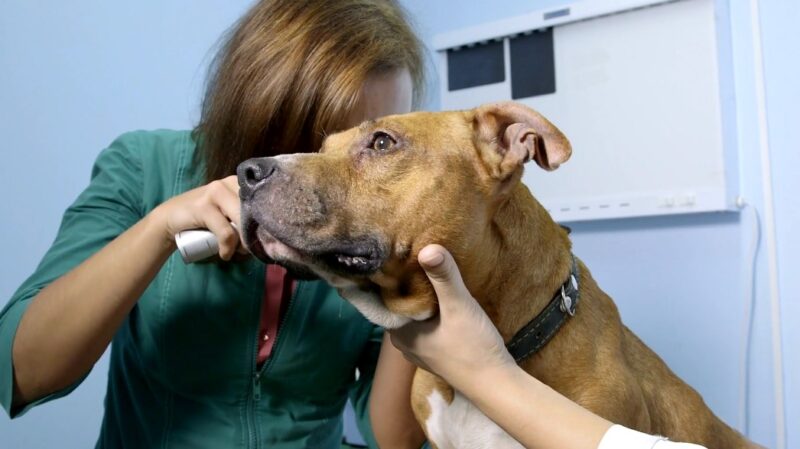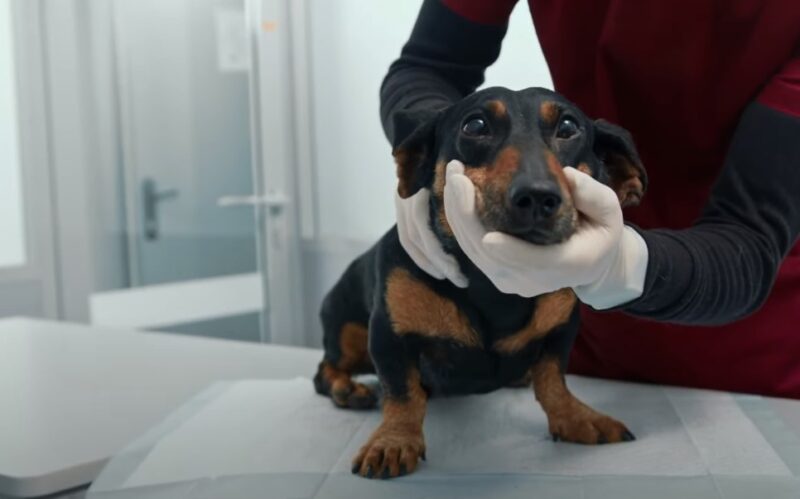Hydrocortisone cream is a topical medication commonly used in humans to reduce inflammation and alleviate itching and irritation. It falls under the category of corticosteroids. The use of hydrocortisone cream for dogs often raises questions about its safety and effectiveness. To address these concerns, this article provides a comprehensive understanding of its use on dogs.
Hydrocortisone Cream
Hydrocortisone is a mild corticosteroid that works by reducing swelling, redness, and itching. It achieves this by inhibiting the immune system’s inflammatory response. While this medication is effective in managing various skin conditions in humans, its use in dogs requires careful consideration.
Skin Conditions in Dogs
Dogs experience a range of skin conditions, including allergies, hot spots, eczema, and insect bites. These conditions often cause discomfort, leading to scratching and licking, which may worsen the situation. Identifying and understanding the underlying cause of these skin issues is crucial before considering any form of treatment.
Safety of Hydrocortisone Cream in Dogs
The safety of hydrocortisone cream in dogs hinges on various factors such as the dog’s overall health, the condition being treated, and the duration of the treatment. Generally, hydrocortisone is considered relatively safe for dogs when used appropriately. However, it should never be used without the guidance of a veterinarian.
Veterinarian Guidance and Prescription

A veterinarian will evaluate the dog’s specific condition, considering factors like the severity of symptoms, the dog’s size, and any other underlying health issues. The vet may prescribe hydrocortisone cream as part of a treatment plan, often in conjunction with other medications or treatments.
Risks and Side Effects
While hydrocortisone cream is generally safe, it can have side effects, especially with prolonged use or misuse. Potential side effects include skin thinning, increased vulnerability to skin infections, hormonal imbalances, and in rare cases, systemic effects if absorbed in large quantities. Monitoring the dog’s response to the treatment is crucial.
Application and Dosage
The proper application and dosage of hydrocortisone cream are vital for safety and effectiveness. The cream should be applied to the affected area as directed by the veterinarian. It’s important to prevent the dog from licking the treated area, as ingestion of the cream can lead to internal side effects.
Alternatives to Hydrocortisone Cream

In some cases, alternatives to hydrocortisone cream may be recommended. These alternatives include other types of topical treatments, oral medications, or natural remedies. The choice of treatment should be based on the dog’s specific needs and the vet’s recommendation.
Monitoring and Follow-up
Continuous monitoring is essential when using hydrocortisone cream on dogs. Owners should watch for any changes in the condition of the skin and the overall health of the dog. Regular follow-up visits to the veterinarian are crucial to assess the effectiveness of the treatment and to make any necessary adjustments. It’s important to observe any side effects or unusual behaviors in the dog and report these to the vet promptly.
The Underlying Cause
Treating the symptoms of skin conditions with hydrocortisone cream is just one part of the solution. Identifying and addressing the underlying cause of the skin issue is equally important.
Causes may include allergies, infections, hormonal imbalances, or environmental factors. A comprehensive approach that includes diagnosis and treatment of the root cause will lead to more effective and long-lasting relief for the dog.
Duration of Treatment

The duration of hydrocortisone cream use should be as short as possible to minimize the risk of side effects. Long-term use can lead to complications, so it’s generally recommended as a short-term solution. The veterinarian will advise on the appropriate duration of treatment based on the dog’s response and the nature of the skin condition.
Precautions and Safety Measures
When using hydrocortisone cream on dogs, certain precautions should be taken. These include avoiding contact with the eyes, nose, and mouth of the dog.
It’s also important to use the cream only on the specific areas prescribed by the veterinarian and not to use it on open or infected wounds unless directed by the vet.
Impact on Overall Health
The impact of hydrocortisone cream on a dog’s overall health should be considered. While the primary aim is to treat skin conditions, it’s essential to ensure that the treatment does not adversely affect the dog’s health in other ways. A holistic approach that considers the dog’s overall well-being is vital in any treatment plan.
Informed Decisions for Pet Owners

As a pet owner, making informed decisions about your dog’s health is paramount. Understanding the benefits and risks associated with hydrocortisone cream, as well as exploring all available treatment options, allows for a more informed decision-making process. Collaboration with a veterinarian is key to ensuring the health and safety of your dog.
FAQs
Can hydrocortisone cream be used for all breeds of dogs?
Hydrocortisone cream can be used across different dog breeds, but the breed-specific sensitivity should be considered. Certain breeds with more sensitive skin or predispositions to skin issues might react differently to the cream. Always consult with your veterinarian for breed-specific advice.
How quickly does hydrocortisone cream start working on dogs?
The effectiveness and the speed at which hydrocortisone cream works can vary. Generally, you might start noticing a reduction in redness, swelling, and itching within a few days of consistent use. However, the exact time frame depends on the severity of the condition and the individual dog.
Can I use human hydrocortisone cream on my dog?
While human hydrocortisone cream is similar to the veterinary version, it’s not recommended to use it on your dog without a vet’s approval. Some formulations intended for humans might contain additives or concentrations that are not suitable for dogs.
Will hydrocortisone cream affect my dog’s fur or coat?
Hydrocortisone cream typically does not affect the fur or coat. However, if your dog licks the area excessively or if there’s an allergic reaction to the cream, there might be some impact on the fur, like thinning or discoloration in the treated area.
Is it safe to apply hydrocortisone cream to my dog’s paws?
Yes, hydrocortisone cream can be applied to a dog’s paws if they are experiencing irritation or allergies in that area. However, special care should be taken to ensure that the dog does not ingest the cream by licking its paws. Consider using a protective covering like a pet bootie or sock.
Can long-term use of hydrocortisone cream lead to resistance in dogs?
There is no significant evidence to suggest that dogs develop resistance to hydrocortisone cream over time. However, prolonged use is generally not recommended due to potential side effects. Instead, it’s important to address the underlying causes of the skin issue for long-term relief.
Conclusion
In summary, hydrocortisone cream can be a beneficial treatment for certain skin conditions in dogs when used correctly and under veterinary supervision. It’s important to balance the benefits of the cream with its potential risks and side effects.
Regular monitoring, understanding the underlying causes of skin conditions, and maintaining open communication with your veterinarian are essential steps in managing your dog’s skin health effectively. As always, the well-being of your pet should be at the forefront of any treatment decisions.
